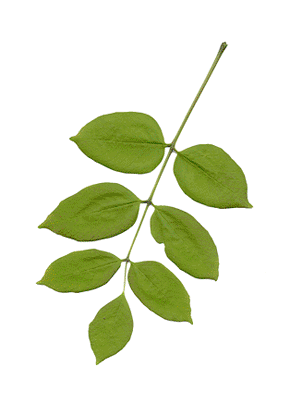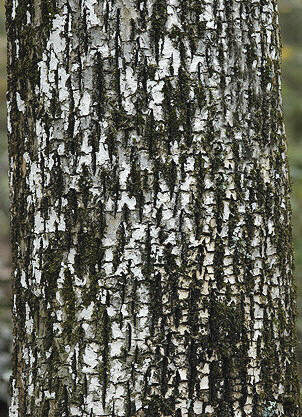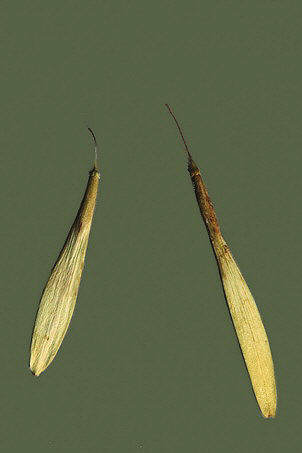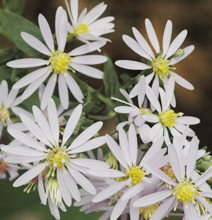| |
|
| |
 |
| |
White Ash Leaf |
Identification:
In fall the leaves of the White Ash can be yellow or purple.
Each leaf is composed of 5-9 leaflets.
The leaves are pinnately
compound,
opposite and have a
total length between 8 and 12 inches. The leaves are paler
below and lightly hairy. The White Ash leaflets
are entire below the midpoint of the leaflet. Compare
the leaflet shape with that of the Shagbark Hickory. Note that
the White Ash leaflets are stalked, unlike the leaflets of the
Shagbark Hickory. The White
Ash leaves and branches are opposite, whereas the Shagbark Hickory
leaves and branches are alternate.
You can see the branching pattern better as the tree loses its
leaves.
| |
|
 |
|
|
White Ash Bark |
The bark of the White Ash is
gray-brown, thick, and is deeply furrowed with a distinctive
diamond-shaped pattern of ridges. This is a good
identification characteristic in all seasons for this tree.
The twigs of the White Ash are
stout, gray or brown or sometimes greenish brown. The upper
edge of the leaf scars have a deep notch. Smaller twigs are
round, not four- sided as they are for Blue Ash.
| |
|
| |
 |
| |
White Ash Samaras |
In late summer and fall you can
often find the fruit of the White Ash on the pavement of the tree
trail. The fruits, called samaras, are paddle-shaped.
Look at the shape of the samara closely, because you will want to
compare its shape with the samara of the Blue Ash at station Eight.
In the White Ash, the seed is only partially enclosed by the wings.
The samaras are eaten by many birds and rodents.
Other Uses
and Lore: Although not as strong as hickory, the wood has
a good combination of strength and lightness. It is much used
for the "D" handles of shovels and spades, and is the wood of choice
for oars and baseball bats.
The Trail From
Station Two to Station Three
 |
|
Asters |
From Station
Two, the trail winds its way down the west side of the ridge. Early in the fall,
look along the sides of the trail for wildflowers. Often
there are subtle changes in the habitat and plant and animal species
due to the changing aspect of a slope. Look for a marker on
the left of the trail in front of a tall tree with dark bark that is
divided into small blocks. You will be at Station Three.
|

